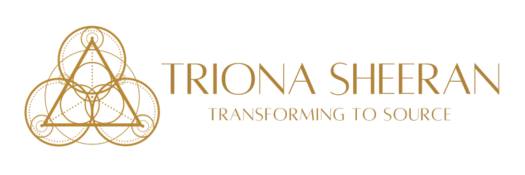In the ever-evolving landscape of healthcare, the dichotomy between traditional and holistic medicine has been a subject of ongoing debate and exploration. Traditional medicine, deeply rooted in historical practices and scientific evidence, often stands in contrast to the emerging and encompassing realm of holistic medicine. Traditional medicine, as we commonly encounter it in hospitals and clinics, is deeply entrenched in established scientific principles and evidence-based practices. This conventional approach relies heavily on pharmaceutical interventions, specialized medical procedures, and a vast body of accumulated medical knowledge. It has become the cornerstone of healthcare systems worldwide, providing standardized protocols for treating a myriad of illnesses.
However, the strengths of traditional medicine come hand in hand with limitations, often focusing on symptom management rather than holistic well-being and preventative care. On the flip side, holistic medicine has emerged as a paradigm that views health as a holistic entity, encompassing the interconnectedness of the mind, body, and spirit. This approach places emphasis on individualized patient care, prevention, and wellness, aiming to address the root causes of illnesses rather than merely alleviating symptoms. Holistic medicine incorporates a diverse range of complementary and alternative therapies, recognizing the importance of lifestyle, nutrition, and mental well-being in promoting overall health.
The Origins of Traditional Medicine
Traditional medicine finds its origins in the ancient civilizations of Egypt, China, India, and Greece, where healing practices were closely intertwined with spiritual and philosophical beliefs. In the West, the Greco-Roman tradition has played a pivotal role in shaping the foundations of modern medicine. The works of Hippocrates, often regarded as the father of Western medicine, introduced concepts like the humoral theory, emphasizing the balance of bodily fluids for health. Galen, a prominent physician in ancient Rome, further expanded on these ideas, leaving a lasting imprint on medical thought.
The Middle Ages witnessed the preservation and transmission of medical knowledge through Islamic scholars, contributing to the Renaissance’s revival of scientific inquiry in Europe. During this period, herbalism, alchemy, and the use of medicinal plants thrived, laying the groundwork for botanical medicine still evident in contemporary practices. The Scientific Revolution marked a paradigm shift in medicine, with advancements in anatomy, physiology, and germ theory leading to the development of modern medicine.
The Origins of Holistic Medicine
The emergence of holistic medicine can be traced back to a growing recognition of the limitations of the traditional medical model, leading to a desire for a more inclusive and patient-centered approach. The roots of holistic medicine can be traced to ancient healing traditions, where the interconnectedness of mind, body, and spirit was integral to health. However, the formal emergence of holistic medicine as a distinct field gained momentum in the latter half of the 20th century. Influenced by cultural shifts, dissatisfaction with purely symptomatic treatments, and a growing interest in alternative therapies, holistic medicine began to gain recognition and acceptance. Drawing inspiration from ancient healing practices such as Ayurveda, Traditional Chinese Medicine, and Native American healing traditions, holistic medicine seeks to combine the best of both worlds. This integration is not about dismissing the advancements of modern medicine but rather embracing a more comprehensive approach that considers the entirety of an individual’s well-being.
Difference in Core Principles
Traditional medicine and holistic medicine diverge significantly in their core principles, reflecting distinct approaches to healthcare. Traditional medicine, characterized by specialization and standardization, relies on healthcare professionals specializing in specific fields such as cardiology or neurology. It places a strong emphasis on evidence-based practices and standardized treatment protocols, providing a consistent framework for diagnosis and treatment. The mechanistic view of the body prevalent in traditional medicine sees the human body as a complex machine, analyzing illnesses through physiological and biochemical mechanisms. Pharmaceutical interventions, including medications and surgical procedures, are frequently employed to manage and treat various health conditions within this paradigm.
In contrast, holistic medicine adopts a holistic perspective, viewing health as a dynamic interplay between the mind, body, and spirit. This paradigm emphasizes the interconnectedness of these elements and acknowledges the integral role of emotional, mental, and spiritual well-being in overall health. The individualized approach of holistic medicine recognizes the uniqueness of each person, tailoring treatment plans to address not only physical symptoms but also the broader aspects of their lives. Prevention and wellness take center stage, with a strong focus on proactive measures such as lifestyle modifications, nutritional counseling, and stress management to address potential risk factors.
Moreover, holistic medicine integrates a wide array of complementary and alternative therapies, such as acupuncture, herbal medicine, chiropractic care, and energy healing. These therapies aim to enhance the body’s natural healing abilities and promote holistic well-being. Patient empowerment is a key principle in holistic medicine, encouraging active participation and decision-making in the healthcare journey. Patients are viewed as partners in the healing process, with their preferences and values playing a crucial role in shaping treatment plans.
While traditional medicine relies on a mechanistic view of the body, holistic medicine adopts a more integrative and individualized approach, emphasizing prevention, wellness, and interconnectedness. Recognizing the strengths of both paradigms allows for a more comprehensive and informed approach to healthcare, where a balance between the two can contribute to a holistic and patient-centered model of wellness. Integrating aspects of traditional and holistic medicine has the potential to provide a more nuanced and personalized approach to healthcare, addressing the diverse needs of individuals for optimal well-being.
To wrap it up, the idea of blending traditional and holistic approaches in healthcare comes from realizing that one-size-fits-all doesn’t cut it for our health complexities. Mixing the best of both worlds gives us a more flexible, nuanced, and people-focused system. It’s all about catering to the different needs and choices people have. When we get traditional and holistic practitioners talking and working together, magic happens. It’s like creating a healthcare dream team that puts your well-being front and center. So, the goal is to build a healthcare system that’s all about understanding what makes each of us unique and promoting overall health and happiness.
